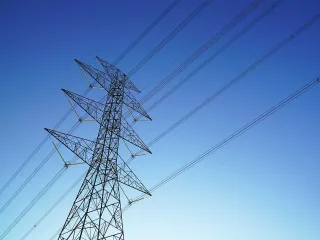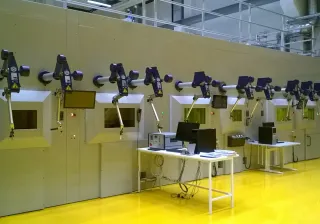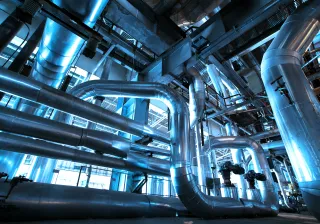Strict regulations and protocols ensure the safety and reliability of nuclear power plants. The releases into the environment from nuclear power sources are continuously monitored, including stack emissions. A novel method of evaluating these emissions has been developed at VTT.
Key facts
1-hour instead of multi-day collection and measurement times
Greatly reduced manual workload for measurements
First demonstration of C-14 detection using laser spectroscopy outside of a laboratory environment
The world relies on established power sources to provide electricity to many of its parts, although fairly new generation methods – like renewables – are becoming more widespread and cheaper with each passing year. Nuclear power plants are among the most widely used power sources. Even now, over 50 new nuclear plants are being built globally[1]. Alongside their construction, new technologies ensuring their continuous safety are also being developed. VTT partnered with Fortum – a Finnish energy company – to improve and test a method used for power plant monitoring.
Laser-precise measurements
A new method has been developed for the monitoring of stack emissions for the presence of carbon-14, a radioisotope of carbon whose emissions into the atmosphere must be controlled. The technique currently used to measure C-14 is both time and labour intensive. It involves collecting samples over an extended period of time and manual laboratory analysis, which also produces additional radioactive waste. The new approach developed by VTT uses laser spectroscopy to reduce the time, labour and ultimate cost of these measurements. For more in depth information, see the scientific article “On-Line Monitoring of Radiocarbon Emissions in a Nuclear Facility with Cavity Ring-Down Spectroscopy”.
Although laser spectroscopy is used as a detection method in other fields, it has not been used to detect gaseous radiocarbon emissions until recently. VTT’s research project started with laboratory tests to prove the approach can be applied to C-14 emitted into the air. The next steps involved optimizing the new measurement instrument to ensure it would work effectively outside of the laboratory environment and making it transportable to enable field measurements.
An innovative solution with great potential
VTT’s innovative solution eliminates most if not all of the burden associated with the traditional way of measuring C-14 emissions. It can be effectively used on-site at nuclear power plants, as it can provide automate monitoring of radioactive gaseous emissions with no or limited involvement of the plant’s personnel. No samples need to be collected and sent to laboratories – the molecules are detected directly in gas form. This alone reduces the measurement time from several days to less than an hour. The VTT-developed spectroscopy unit has been tested in an industrial setting at a nuclear power plant, where continuous on-line C-14 monitoring was demonstrated for the first time. C-14 emissions were automatically recorded during several consecutive days with measurement point every 45 min.
Further developments will allow for its use for other applications related to nuclear facilities, such as nuclear waste repositories monitoring or rapid nuclear waste characterisation. Other applications outside of nuclear power plants are also foreseen, as there is even the possibility of applying this technology to biomedical studies, environmental monitoring, or even certifying biofuels and developing improved climate models. It can also potentially be used to detect tritium, further extending the potential of this innovative device.
[1] Source: https://pris.iaea.org/pris/worldstatistics/underconstructionreactorsbycountry.aspx








